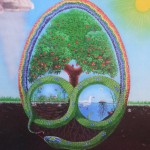Permaculture and Beyond

Permaculture seeks to harmonise the individual characteristics of landscape (landform, soil, water, vegetation, animals) with the needs of the people utilising it, in order to create a system that is both productive and sustainable in the long term.
We use Permaculture as the structural framework of our work. Permaculture is NOT a series of techniques, nor an obscure cult, nor a ‘way of doing things’; it is a scientific (including social sciences) approach to creating integrated systems.
Permaculture is derived not only from ‘permanent’ and ‘agriculture’ as is often interpreted, but equally, from permanent and ‘culture’. Without an intimate connection with the local culture, including the culture of the individual, a design is unlikely to be implemented, and even less likely to be sustainable over a longer time. A busy professional person might emphasise the need for low maintenance and high beauty as priorities for his or her lifestyle, while another person needs high and diverse productivity to fulfil the desire for independence and self-sufficiency. A person or institution concerned with maximising profit in a sustainable manner will require other functional priorities Each design must be different.
It is a conscious self-empowerment tool through which we can exercise a far greater degree of control over our lives, by taking decisions based on a wholistic understanding of the situation at hand. At a time when so much of life is influenced by fewer and fewer powerful corporate entities, the potential to take personal decisions which achieve more independence is increasingly important and relevant.
One important facet of Permaculture design is to recognise limits and patterns, to identify their characteristics, then seek to stretch those limits; to minimise the negative, and maximise the positive. If we succeed in this, then the design has achieved a more sustainable outcome, less constrained by extremes, more productive through greater flexibility, and hence more liveable.

